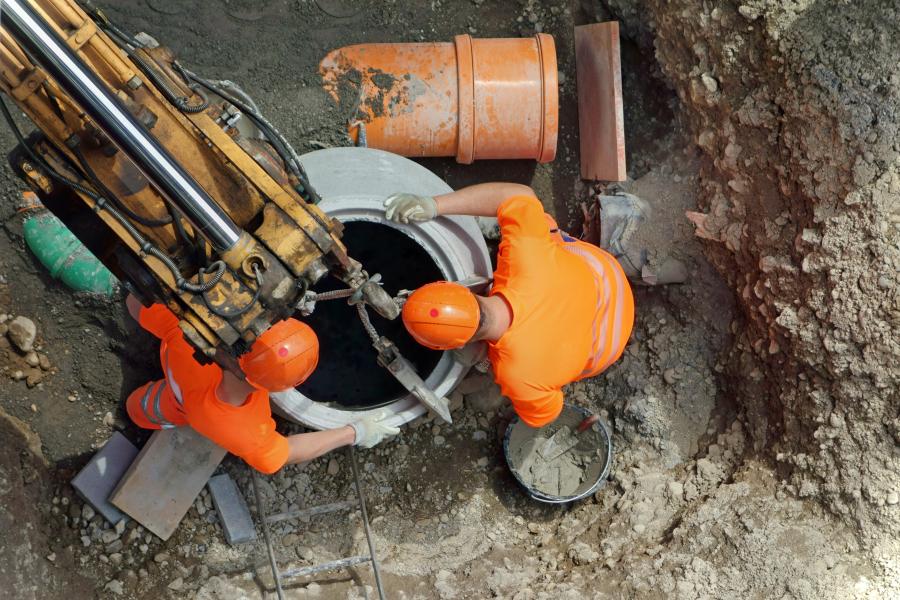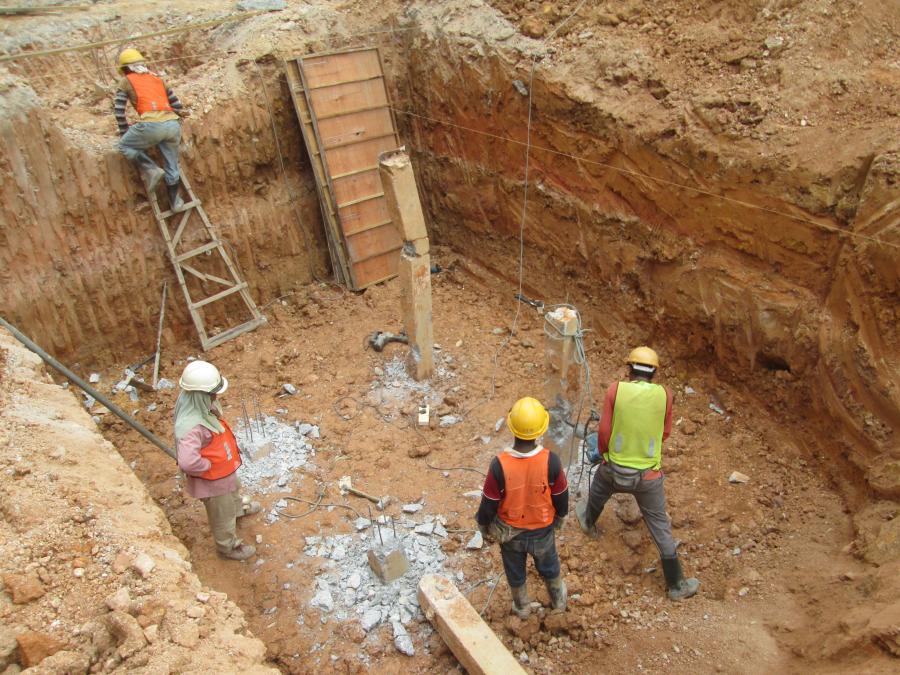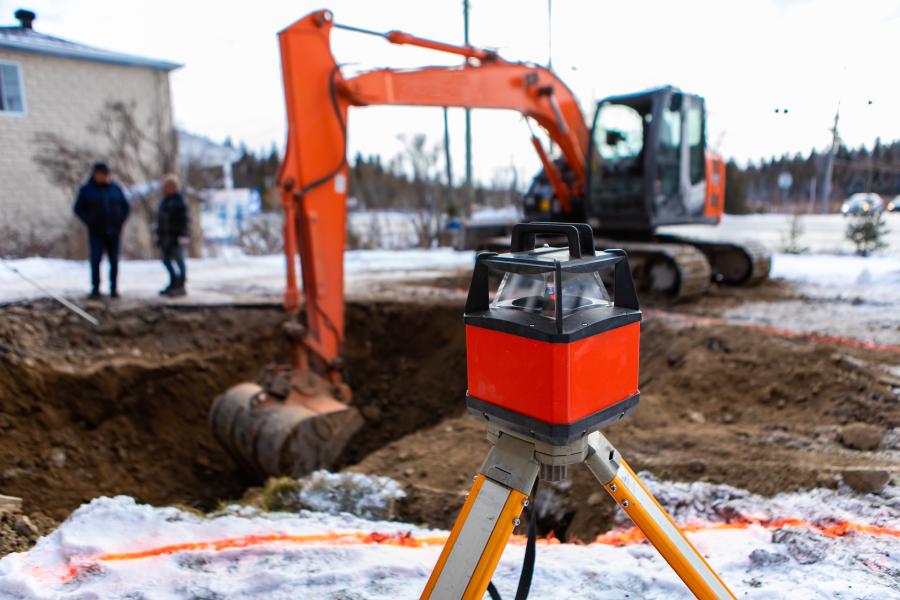Falls are a leading cause of deaths on construction sites. But fall-through hazards — into or through a hole — are just as common as falls from height.
Deaths from falls lead fatalities in construction. Construction workers just as often die from fall-through hazards as they do from work at elevations. In 2018, OSHA logged the preventable deaths of 320 workers. This year OSHA's National Safety Stand-Down to Prevent Falls in Construction showcases the critical need for safety precautions both around holes and at height.
Holes are defined by OSHA as gaps or spaces in a floor, roof, horizontal walking-working surface, or similar surface at least 2 in. at its smallest dimension.
"Safety is a cornerstone of any good business in the construction industry," wrote crane service company Crane Repair, Englewood, Colo. "A construction manager's commitment to ensure safety for everyone who steps foot on a site is essential."
In a blog on its website the company offers tips for preventing fall-through incidents and injuries on the job.
Noting many places a worker can fall through on a construction site, the crane repair company said that tripping hazards often cause fall-throughs.
"Another hazard is any place on site with excessive noise," the company said. "Excessive noise can make it hard for a worker to hear verbal warnings about a safety hazard from co-workers."
Crane Repair believes the first step to preventing falls on a job site is a thorough safety hazard inspection. That's where OSHA comes in.
The agency offers guidelines for inspections, including identifying load limits for each job site area, potential tripping hazards, unprotected edges and areas of excessive noise.
"Another critical factor in workplace safety is worker training," the company said. "Workers need to be kept up to date on OSHA safety requirements and your company's policies regarding fall prevention."
The proper use of fall arrest systems must be taught to ensure that if a fall does happen, the system will stop it before the worker hits the ground.
Crane Repair offers tips for preventing falls from hazardous hotspots across a construction site, including unprotected edges.
"An opening in a wall or a hole in the floor can be a falling hazard if left unprotected." To prevent a fall from an unprotected edge:
- After creating an unprotected edge, immediately cover it or put up rope to protect it;
- Keep areas with holes off limits;
- Hole coverings must be able to support twice the weight of a worker and their tools or materials;
- Do not carry materials that are big enough to block your vision. If you must do so, be sure your fall arrest system is securely in place; and
- Keep the work area clean of clutter that could cause a trip.
"Falls are a risk for every construction worker. But working to prevent them in these ways can minimize the chance of them happening on your job site," said Crane Repair.
Beyond Manholes
Open manholes aren't the only fall-through hazard on a job site, according to David Gardner, construction safety consultant of Simplified Safety.
Unprotected holes in a floor, deck or roof can result in serious injuries as well if workers are unaware of or choose to ignore them.
OSHA covers the rules for fall-through protection in 29 CFR 1926 Construction Industry Regulations, Subpart M.
ANSI volume A10.18 Safety Requirements for Temporary Roof and Floor Holes, Wall Openings, Stairways, and Other Unprotected Edges in Construction and Demolition Operations addresses the hazards as well.
Gardner believes both "are helpful in defining the standard-of-care for managing holes on construction sites."
In a Simplified Safety blog post, he offered a summary of industry safety regulations and standards for prevention of fall-through injuries.
- If you make a hole, guard it. Before cutting the hole, barricade the work area to keep people out.
- If the hole must be open, and the fall distance is more than 6 ft., employees must be protected by use of a fall arrest system, guardrails or covers.
- Any fall arrest system must meet OSHA criteria established in 1926, Subpart M.
- A guardrail must be a minimum of 42 in. high, have a mid-rail and be capable of withstanding a 200-lb. load. "Toe boards are recommended at all times; they are required for work under the hole," wrote Gardner.
- If the hole is not guarded, it must be covered. The cover must support at least a 200-lb. load. The cover must be larger than the opening, secured against displacement and properly labeled or identified, such as "Floor Opening Do Not Remove." "If you have a choice," said Gardner, "make both the hole and cover round. An oversized round cover cannot fall through a smaller round hole."
- Never cover a hole with any type of non-substantial or non-weight bearing material(s) such as paper, cardboard or plastic.
- Industry standards require that, regardless of fall distance, employees be protected from tripping or stepping into holes by covering the openings.
"In layman's terms, if a hole is big enough to fall through, then it must be either be covered, guarded or fall protection measures utilized," wrote Gardner.
"If it is a small hole that presents only a tripping hazard for example a 4-inch diameter hole for a pipe, cover it regardless of the fall distance below the hole."
The Contractor's Role
It is the general contractor's (GC) responsibility to assure all parties properly communicate with one another, and potential safety hazards are brought forth and discussed. "If you see something — say something."
Safety materials provider WeeklySafety.com notes that holes are one hazard area in which many workers forget to protect themselves and co-workers "or at minimum throw some caution tape up and call it good."
OSHA General Industry Standard 1910.28 states employees are to be protected from tripping or stepping into or through any hole less than 4 ft. above a lower level by covers or guardrail systems.
Floor holes can be guarded or protected by guardrails, covers and other conventional fall protection methods, according to WeeklySafety.
- Walking and working areas and rooftops should be inspected for potential floor holes, including skylights.
- Guardrails used around floor holes must meet specific construction guidelines to prevent falls to lower levels and erected on all unprotected sides or edges.
- Body belts are prohibited and may not be used as part of a fall protection system.
OSHA Construction Standard 1926.502(b) Guardrail Systems states that guardrails must have a top rail 42 in. high and strong enough to withstand 200 lbs. of force.
Mid rails must be 21 in. high and strong enough to withstand 150 lbs. of force, and guardrail systems used at holes must be erected on all unprotected sides or edges of the hole.
"When used to protect employees, hole covers must be able to support two times the weight of the employees, equipment and materials," according to a WeeklySafety.com blog.
Hole covers must be color coded or marked with the word "Hole" or "Cover."
OSHA Standard 1926.501 says that each employee on a walking/working surface must be protected from falling through and tripping in or stepping into or through holes.
- Hatchways and chute floors are also considered floor holes and must have protection.
- A hinged door may be used to prevent accidents involving hatches and chutes that may be located on industrial floors or roofs.
- Removable railings should stay in place, even when the opening is not in use.
- When materials are going into a floor chute, protection must be provided to prevent falls through the opening.
"Never assume everyone will see the hole and step around it, or think that caution tape is enough," said WeeklySafety. "A slip or trip near the hole can result in a serious injury or worse. Proper covers, guardrails and signage must be utilized on and near floor hole hazards."
When Fall-Throughs Happen
When falls do happen, steps can be taken to decrease the possibility of extreme injury. Here are Crane Repair's suggestions:
- Cap all exposed steel rebar to minimize injury if a worker should fall onto it.
- Require helmets at all times to protect against traumatic head injury
- Use fall arrest systems to stop a fall in progress
To further increase safety on your site, stay informed about the latest in worker safety, including OSHA's resources for safety training. "Establishing and following thorough safety protocol helps keep everyone safe." CEG
Lucy Perry
Lucy Perry has 30 years of experience covering the U.S. construction industry. She has served as Editor of paving and lifting magazines, and has created content for many national and international construction trade publications. A native of Baton Rouge, Louisiana, she has a Journalism degree from Louisiana State University, and is an avid fan of all LSU sports. She resides in Kansas City, Missouri, with her husband, who has turned her into a major fan of the NFL Kansas City Chiefs. When she's not chasing after Lucy, their dachshund, Lucy likes to create mixed-media art.
Read more from Lucy Perry here.
Today's top stories























